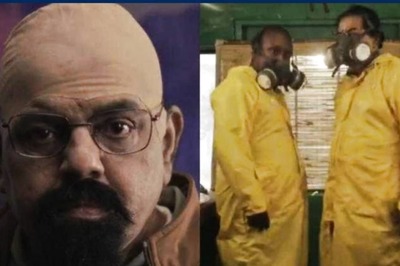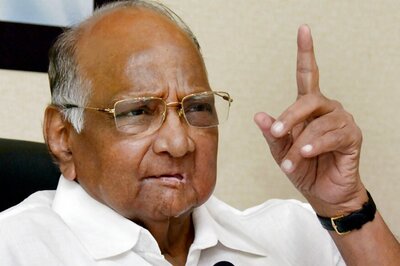
views
The larger message from the Brigade Parade Ground in Kolkata last week was loud and clear - that Prime Minister Narendra Modi is left with fewer friends.
Modi was quick to play the victim card again, tweeting a picture atop at howitzer a few hours later and speaking eloquently on opposition’s attempts of uniting with a single point agenda of removing him from office.
Modi’s rhetoric from Silvassa has an un-canny resemblance to Indira Gandhi’s campaign ahead of 1971 polls.
Indira Gandhi made a mincemeat of the Badi Aghadi (Grand Alliance) in the historic Lok Sabha polls held after the momentous decisions of bank nationalisation and abolition of privy purses. At the hustings, she condensed all her achievements into two simple words - Garibi Hatao.
But 2019 is not 1971. Indira Gandhi took on the opposition with an intelligent mix of her performance on social and economic front with sharp political manoeuvres.
The biggest setback for the NDA thus far ahead of the elections is the Samajwadi Party-BSP alliance in Uttar Pradesh. Trinamool Congress chief Mamata Banerjee’s mega rally for unity of anti-BJP parties has given shape to ‘Modi-Hatao’ campaign.
The picture as to how the opposition is going to work together is a bit hazy. ‘Grand alliance’ is a misnomer. Opposition unity is a work in progress and has its own limitations and complications. It is unlikely to be a ‘one size fits all’ formation.
Neither has it envisaged a ‘one to one fight with the BJP’ in all the 543 seats in the Lok Sabha as is often being projected by the Prime Minister.
Mamata’s “mega rally”, attended by opposition leaders from some 20 varied parties, has sought to re-iterate that BJP in the Lok Sabha elections has to be tested beyond the plank of stability and strong leader.
The opposition will seek accountability from the ruling party on its performance on growing social tensions, communal polarisation, un-employment and rural distress.
The BJP, after running a full majority government for five years, will call the opposition as a ‘rag tag coalition’, but will it cut ice with the voter?
The fact of the matter is that BJP’s march to become a pan-India party post 2014 general election has increased the index of opposition unity. Regional parties are feeling threatened, forcing them to look towards Congress to counter BJP’s dominance.
Mamata's United India rally showed that the fight this time could be between the BJP and regional parties in the key states. Will Modi's charisma and Amit Shah's tactics break the caste combinations and regional appeal of these parties?
Regional parties like the TRS, BJD and YRRCP, which did not attend the Kolkata rally, are hedging their bets for post poll possibilities.
The Shiromani Akali Dal, the Janata Dal (U), the Lok Janashakti Party have no option but to remain in the NDA but the sulking Shiv Sena is bargaining hard.
The BJP is relying on the division in opposition ranks over prime ministerial ambitions of the Congress president Rahul Gandhi, BSP chief Mayawati and West Bengal chief minister Mamata Banerjee.
In the mega rally, NCP supremo Sharad Pawar made it clear that he is not in the prime minister’s race as he got enough from the people in his long parliamentary career. Almost all leaders who addressed the rally stressed on the need of unity against the BJP.
In retrospect, BJP’s aggressive foray outside its geographical and demographic boundaries has forced the unity of regional parties against the BJP in the fight for survival. Congress has played its cards well by channelising the dissent.




















Comments
0 comment